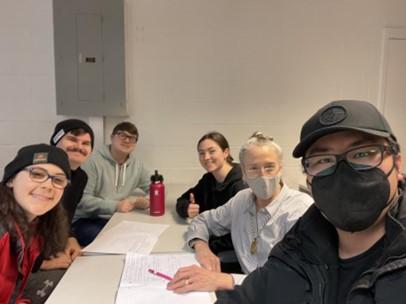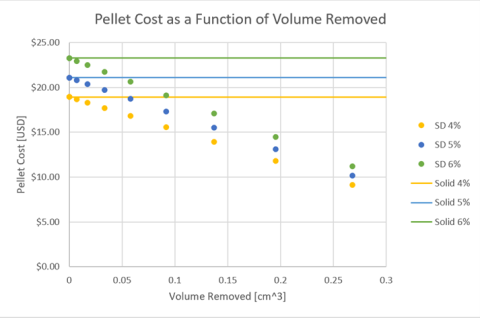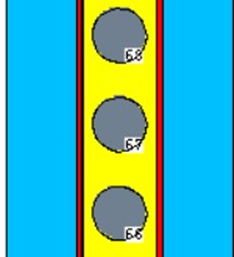The purpose of this project is to The main objective of this project is to show that there are potential benefits to power companies, specifically those using pressurized water reactors such as the Westinghouse AP-1000. To understand the plausibility and ramifications of any fuel pellet changes, it is important to check environmental and societal effects. The method of production for optimizing a fuel pellet chosen was usage of 3D printing’s ability to extrude material into complex shapes using different materials. One factor considered was the potential reduction of work hours for uranium miners, reducing the negative health impacts directly related to mining such as lung cancer. The final factor considered was the potential cost benefits for lowering the volume of fissile material in the pellet. By today’s prices, any improvement to the fuel pellet will be negligible to the overall price of reactor operation, but with potential cost increases over time the value of these improvements grows. Shown below is a figure comparing cost versus volume removed from the pellet at different average fuel enrichments.
Team: Patty Dooley, Isabella Reddish, Addie Hervey, Hugh Song, Dakota Contryman, Robert Ivers
Project Advisors: Dr. Tom Haley

Members of the design group
Project Motivation
Monte Carlo N-Type Particle Code (MCNP) can be used to model the neutronics of a nuclear reactor. Due to the current socio-political climate at the time of this project, a potential shortage of nuclear fuel could be expected in the coming years. Considering this, an improved fuel design could be beneficial to currently active reactors. Through usage of MCNP code potential, neutronics improvements can be made through the addition of void and adjustment of fuel enrichment percent as well as the boron concentration used in nuclear moderation.

Figure 1 - Analysis of Cost Impact of Volumetric Removal of Fuel Per Pellet.
Project Description
The purpose of this project is to The main objective of this project is to show that there are potential benefits to power companies, specifically those using pressurized water reactors such as the Westinghouse AP-1000. To understand the plausibility and ramifications of any fuel pellet changes, it is important to check environmental and societal effects. The method of production for optimizing a fuel pellet chosen was usage of 3D printing’s ability to extrude material into complex shapes using different materials. One factor considered was the potential reduction of work hours for uranium miners, reducing the negative health impacts directly related to mining such as lung cancer. The final factor considered was the potential cost benefits for lowering the volume of fissile material in the pellet. By today’s prices, any improvement to the fuel pellet will be negligible to the overall price of reactor operation, but with potential cost increases over time the value of these improvements grows. Shown below is a figure comparing cost versus volume removed from the pellet at different average fuel enrichments.

Figure 2 – MCNP Pin-cell model.
Results and Accomplishments
Through use of a Python3 script that modeled a pin-cell inside a pressurized water reactor, incremental improvements to fuel pellet designs were made. After analyzing inclusions of spherical voids, a decision was made to utilize low cross section materials to fill the void in order to improve structural stability of the pellet. For this purpose, materials were researched, and silicon carbide (SiC) was decided upon due to its low cross section as well as its high melting point. Shown below is a graphic made by MCNP code of the pin-cell model utilizing SiC inserts.